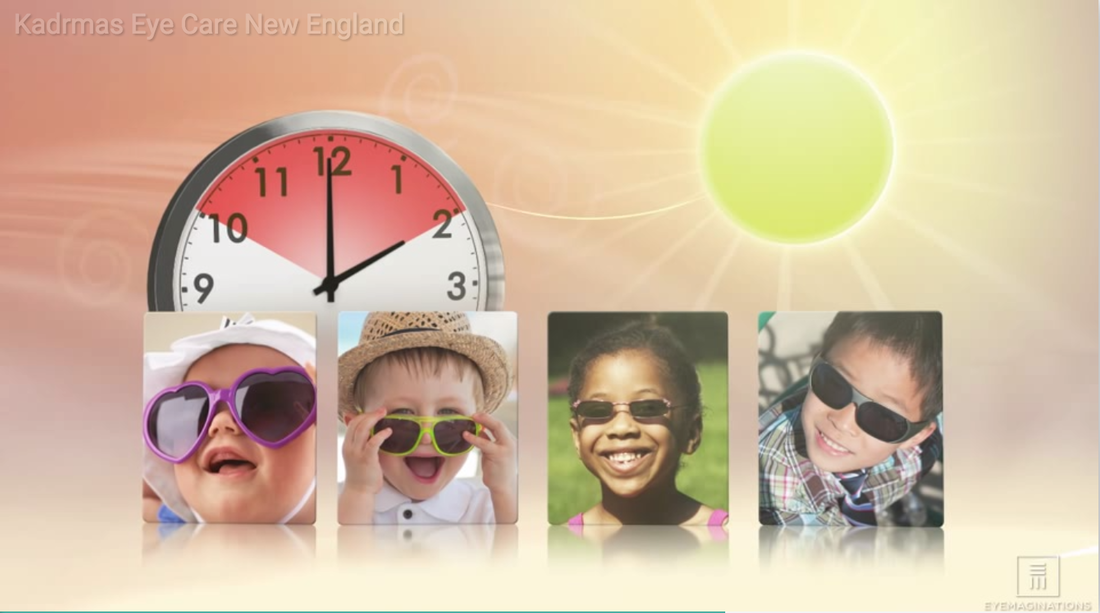We all hear a lot about sunscreen and preventing sunburn, but we don’t hear quite so much about protecting children’s developing eyes. So for this Children’s Eye Health & Safety Awareness Month, we’re taking a look at how you can protect your child’s eyes from the sun.
Sunglasses for Children
UV Blocking
The best way to protect your child’s eyes from the sun is with sunglasses that block 100 percent (100%) of the sun’s harmful UV rays. Exposure to UV radiation can cause eye problems and has been linked to the development of eye problems such as cataracts.
Blue Light Blocking
Protecting your child’s eyes from high-energy visible (HEV) or blue light is also important to his or her eye health, as blue light is thought to damage eyes and contribute to macular degeneration later in life. HEV / blue light comes from not only the sun, but also digital screens and electronic devices such as TVs, computers / laptops, smartphones, and tablets, as well as fluorescent and LED lighting. Certain sunglass lenses block blue light, but not all. It’s important to speak with your optician about which do and don’t. Choosing the Right Sunglasses for Your Child
Use the following as a guide to selecting the right sunglasses for your child:
Additional Tips for Children’s Sunglasses and Protecting Your Child’s Eyes from Sun and Blue Light
Here are some additional steps you can take to protect your child’s eyes from UV sunlight and HEV / blue light:
For More Information and Questions about Your Child’s Eye Health
For more information about children’s sunglasses, visit All About Vision’s ‘Sunglasses for Kids’ and watch the following short video:
To learn more about the benefits of spending time outdoors to children’s and adolescents’ vision, visit the American Academy of Ophthalmology’s EyeSmart website. Finally, if you have questions or concerns about your child’s eye health or vision, please call our office (508-746-8600) to schedule an appointment with one of our ophthalmologists or optometrists. Join us for our final post for Children’s Eye Health & Safety Awareness Month. We’re talking about how to protect your child’s eyes from injury. Comments are closed.
|
EYE HEALTH BLOGCategories
All
Archives
July 2024
|
|
Kadrmas Eye Care New England
55 Commerce Way, Plymouth, MA 02360
14 Tobey Road, Wareham, MA 02571 133 Falmouth Road (Rt 28), Mashpee, MA 02649 |
Phone Number:
1-508-746-8600 Hours: Monday through Friday — 8 AM – 4:30 PM |


 RSS Feed
RSS Feed
